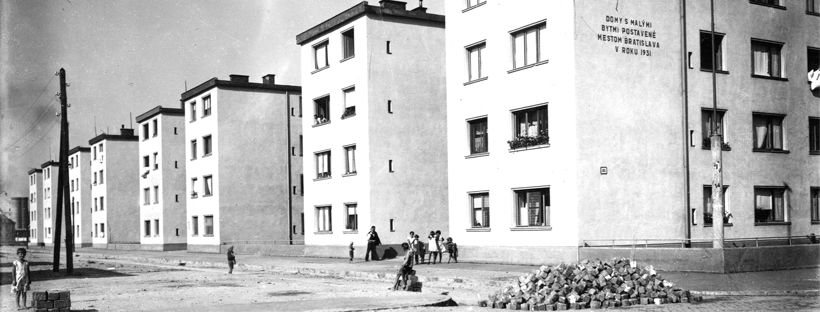Call for abstracts
Particular systems of social protection in Europe were gradually transformed across the 19th and 20th centuries into the welfare state. Simultaneously, the growth of state social policy intervention influenced activities in architecture, with the issue of social housing emerging as an integral component of this process. Divergences in the definition and types of the welfare state were invariably conditioned by the political and cultural differences in the development of European states, most sharply after World War II and the subsequent division of Europe into Eastern Bloc and Western Bloc. Yet nonetheless, it is still possible to discern shared developmental tendencies and influences.
Cities, having to absorb several waves of migration during the 19th and 20th centuries as the outcome of the industrial revolution, were faced with the challenge of the problem of accessible housing for the lower and middle strata of these urbanised populations. One key incubator for modern social welfare programs consisted of the various forms of apartment construction realised through individual philanthropy and industrial enterprises. Several social housing projects took the form of an industrial district or an entire city, further developed into carefully planned systems providing a wide range of social services from housing through sports and cultural opportunities up to education (e.g. Baťa).
One of the first projects with state support was social housing for military personnel (housing for military staff, complexes for disabled veterans). Yet states assumed the role of guaranteeing social support for their citizens only piecemeal: for social housing, the initiative was taken by local municipal authorities and cooperative housing societies. A breakthrough came with the legislative support of cooperative social housing construction, leading to the realisation of many modern complexes reacting in their conception to the contemporary international architectural discussions. Not only was the goal of social policy in architecture and urbanism to improve the living standard of the inhabitants, but equally to expand their education (schools, student dormitories), modernise health care (hospitals, sanitoriums), or improve the system of caring for orphans, the elderly, or the handicapped. Also falling under the social welfare are projects for cultural- or event-based buildings with an impact on city forms, or buildings for recreation.
A defining feature of the second half of the 20th century, which shaped the form of cities primarily in the Eastern Bloc, was the construction of prefabricated housing estates, as a manifestation of the social policy of totalitarian regimes. Meanwhile, Europe underwent a revaluation of the position of the state as the decisive guarantor of the general welfare of its citizens, bringing about a revival of the principle of plurality among the subjects of social care, i.e., the “welfare mix”. Now, the most urgent question is: what challenges to meeting the ideal of the welfare state have been brought by the neoliberal policies implemented after 1989? Or, conversely, what findings are presented by comparative research in the field of social policies and the relevant legislative frameworks in European countries, even including the sense of their materialisation in significant architectural works and urban plans of the past two centuries?
We are interested in contributions addressing one or more of the following themes:
- Philanthropic and utopian visions of social housing and their reflections in new architectural typologies
- Industrialisation as an initiator of modern social programs and determinant in changes in the image of cities / urbanisation
- Examples of social housing for working- and middle-class residents: social differences in the quality and type of housing (e.g., reaction to growth in women’s employment)
- State and cooperative housing construction in the 20th century: legislation, significant projects and realisations
- Buildings for education, health care, culture, recreation; their presence in urban structures and rural landscapes
- Rationalisation of social housing as an impulse toward modern urban and architectural designs
- Urbanistic models of public housing construction: quality of social housing with respect to the natural environment
Editors of the issue: PhDr. Katarína Haberlandová, PhD., Mgr. Gabriela Dudeková Kováčová, PhD., and Mgr. Juraj Benko, PhD.
Deadline for abstracts: 10th April 2022
Notification of acceptance: by 30th April 2022
Deadline for submission of the full paper: 5th September 2022
Releasee a monothematic issue: December 2022
To submit your abstract in this special issue, please use our online form.
